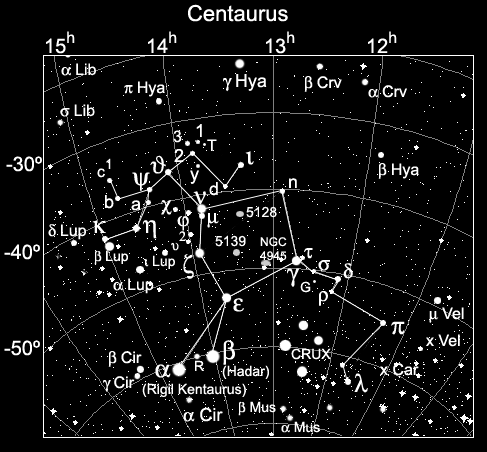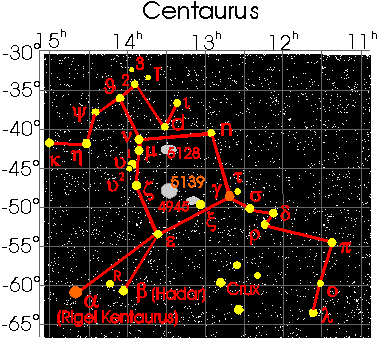
Centaurus is a vast constellation, beginning well to the north and finishing very far to the south. The constellation lies in a rich region of the Milky Way, making it even more of a pleasure to visit. The brightest star in Centaurus, alpha, is really a combination of two very bright stars, with magnitudes 0.14 and 1.2. Not only amongst the brightest in the heavens, the two are also the closest to the Solar System at 4.4 light years away. Only its distant companion, the very dim Proxima Centauri, is closer at 4.22 light years.

Alpha Centauri is the closest star, or rather stars, for it forms a system comprised of three stars. Two of these, the more visible members, are 4.393 light years away. They form a double with an orbit of 79.9 years. The 2000.0 values are 222º and a separation of 14.1" The dimmest member, Proxima Centauri, is the closest star to the Solar System, 4.221 light years away. This red dwarf has a visual magnitude of 11.0, therefore even with telescopes it's an adventure to find. Alpha1 and alpha2 are easily seen in the southern hemisphere, just to the east of the Southern Cross. In the same field of view is Hadar, beta Centauri, also a bright (but more difficult) double.
Gamma Centauri is a double of identical bluish stars, orbiting every 84.5 years, too close for binoculars or small telescopes. The star forms the hip or backside of the Centaur and is found directly north of the Southern Cross. Draw a line from alpha Crucis north through gamma Crucis and continue it for another ten degrees.
